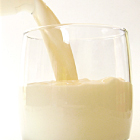 For male bodybuilders, estrogen has acquired an unsavory reputation. Often referred to as a “female sex hormone,” estrogen is in fact produced by both sexes, just as both sexes produce testosterone. The primary difference, as you might suspect, is in the amounts produced.
For male bodybuilders, estrogen has acquired an unsavory reputation. Often referred to as a “female sex hormone,” estrogen is in fact produced by both sexes, just as both sexes produce testosterone. The primary difference, as you might suspect, is in the amounts produced.
Women produce greater amounts of estrogen, which accounts for some obvious female characteristics, including their more prominent breasts, more curvaceous hip structure and softer skin. Also, estrogen prevents hair growth in certain areas, such as on the face.
Men produce estrogen in small amounts in the testes, also the primary site of testosterone production; however, the greatest estrogen production in men comes from the conversion of androgens, including testosterone, into estrogen through the activity of a ubiquitous body enzyme called aromatase. Since aromatase is concentrated in fat tissue, especially peripheral fat stores, such as the legs, when men have more bodyfat, it indicates more estrogen production.
When produced in normal amounts in men, estrogen is thought to exert some health benefits, including some cardiovascular protection, since estrogen is associated with higher levels of protective high-density lipoprotein, a protein carrier in the blood that transports cholesterol out of the body. In terms of anabolic effects, estrogen is thought to help maintain androgen cell receptors, which interact with testosterone to produce anabolic effects.
On the other hand, having more estrogen upgrades the production of sex-hormone-binding globulin in the liver, which ties up testosterone in the blood, making it unable to interact with androgen cell receptors. In addition, estrogen interacts with other hormones, including insulin, to increase bodyfat production.
In bodybuilding, having higher than usual levels of estrogen is linked to increased subcutaneous fat, which is the fat located just under the skin. It’s the increased subcutaneous fat produced by estrogen that is responsible for women’s more curvaceous hips and softer skin compared to men’s, but for bodybuilders, having too much subcutaneous fat obscures muscular definition.
Estrogen also plays a role in encouraging water retention, producing a bloated appearance. It seems to do that by helping release aldosterone, an adrenal steroid that retains sodium and water in the body. Still another problem with increased estrogen in men is that it turns on normally dormant receptors in male breasts, producing a femalelike breast pattern known as gynecomastia. Using anabolic steroids can produce estrogen-related side effects because many steroids can be converted into estrogen by way of aromatase.
Some scientists suggest that estrogen levels have greatly increased in recent years because of widespread use of chemicals in the environment that mimic the effects of estrogen in the body. These are known as “endocrine disrupters,” and some studies suggest that they are the reason for the lowering of male fertility around the world.
There is also a more natural source of estrogens: food. In an article published in IRON MAN several years ago, I discussed the presence of estrogens in milk, pointing out that milk is usually considered taboo during precontest dieting. A nutritional analysis of milk shows no apparent reason for bodybuilders to fear it. Milk contains the best forms of protein for muscle building, and while whole milk contains fat, the nonfat version has none. Yet bodybuilders, even those who don’t get bloated due to lactose intolerance, insist that there is something about milk that hinders fat loss and makes them appear “smooth.”
Some bodybuilders think that the estrogen is the primary problem with milk, due to more milk coming from pregnant cows. A recent study noted the greater use of pregnant cows in milk production as well as an increased rate of estrogen-sensitive cancers in humans, including prostate and breast cancers, that coincides with the increased use of milk derived from pregnant cows.1
A group of men, women and children drank about 20 ounces of whole milk in 10 minutes. The seven men who participated ranged in age from 19 to 21. The researchers took blood samples from the men an hour prior to their drinking the milk and then at 15-minute intervals for two hours afterward.
They found that serum estrone, a weaker estrogen usually found in older women, and progesterone, another so-called female hormone, increased in the men after they drank the milk. At the two-hour point their levels of testosterone and two pituitary hormones that are involved in sperm and testosterone production had dropped, while their urinary levels of all three estrogens—E1, E2 and E3—had increased.
According to the authors, these results suggested that the estrogens in the milk were absorbed and then blocked the secretion of pituitary hormones that are involved in sperm and testosterone production in the testes, leading to less.
An interesting effect was that while plasma levels of the weak estrogen, estrone, increased after the men drank the milk, the far more active estradiol didn’t increase. For estrone to block those pituitary hormones, a rather massive intake would have had to occur, which wasn’t likely with just 20 ounces of milk. Estrone is converted into estradiol, but it takes a while, longer than what occurred in this study. As such, the results are questionable. In addition, five young women also drank the milk, and it had no effect on their ovulation, which would have occurred if the estrogens in the milk had been active.
Another study examined estrogen in various foods and found that foods containing soy had the greatest estrogenlike effects2. That isn’t surprising, since soy contains phytoestrogens, which are natural compounds such as isoflavones that mimic the effects of estrogen because of their similar chemical structures. The amounts of estrogen in other foods, including meat, were negligible.
Recent research suggests that estrogen may play a prominent role in prostate cancer. In fact, it may be more of a major player than testosterone, which many doctors still suspect causes prostate cancer, despite the lack of scientific evidence.
Estrogen, unlike testosterone, is a known carcinogen. It is involved in cancers of the breast and uterus in women. Based on that, a recent study tested the effects of a digested milk extract on cancer cells derived from the prostate, breast and pancreas3. When exposed to milk, isolated prostate cancer cells showed a growth stimulation rate of 30 percent. When the same cells were exposed to almond milk, the growth rate dropped by 30 percent. Milk had no effect on either breast cancer or pancreatic cancer cells.
The authors suggest that milk contains insulinlike growth factor 1, which has anabolic effects when produced in muscle but also promotes increased cell division, a hallmark of cancer. IGF-1 is suspected of playing a role in the spread of breast, colon and prostate cancers, although the evidence for that is not yet definitive. When the researchers applied IGF-1 itself to the prostate cancer cells, it had no effect. They believe that the estrogen and IGF-1 in the milk work in tandem to aid cancer growth.
Other studies have found no effect of dairy products on prostate cancer, and since this was an isolated-cell study, it didn’t necessarily duplicate what would happen in the body. Besides, if IGF-1 actually did promote cancer, those using growth hormone to treat aging or deficiency in children or for athletic purposes would be showing increased cancer rates, since GH boosts IGF-1 in the body—but that just isn’t happening.
The final—and perhaps most important—point to consider about the estrogen content of milk and food is that the amounts of estrogen produced in the body dwarf anything that you could get from food. That applies to both men and women. As for milk’s producing a “smooth” appearance, that, too, exists more in the minds of bodybuilders than it does in reality. On the other hand, milk drunk on its own does stimulate a rather large secretion of insulin, largely because of its amino acid content. If accompanied by excess calories or large amounts of simple carbs, milk will encourage fat gains-—but it isn’t the milk that’s the culprit. It’s what you have with it. Still, the milk myth will continue—just as the nonsensical “eat only egg whites” will-—as they are firmly entrenched in the mythology of bodybuilding.
Editor’s note: Have you been ripped off by supplement makers whose products don’t work as advertised? Want to know the truth about them? Check out Natural Anabolics, available at JerryBrainum.com.
1 Maruyama, K., et al. (2010). Exposure to exogenous estrogen through intake of commercial milk produced from pregnant cows. Ped Int. 52:33-38.
2 Behr, M., et al. (2011). Estrogens in the daily diet: in vitro analysis indicates that estrogenic activity is omnipresent in foodstuff and infant formula. Food Chem Toxicol. 49(10):2681-8.
3 Tate, P., et al. (2011). Milk stimulates the growth of prostate cancer cells in culture. Nut Cancer. 63:1361-1366.












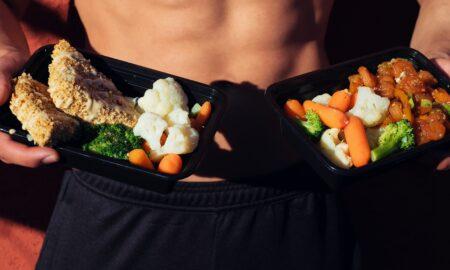
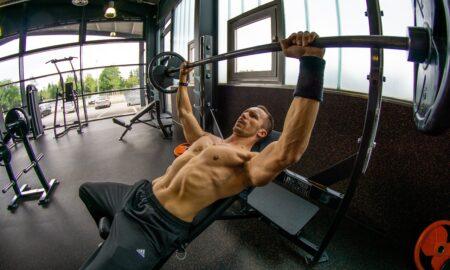
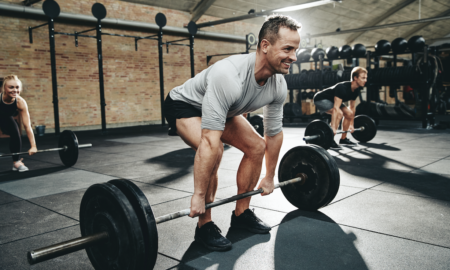
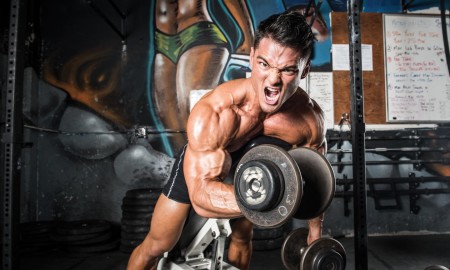

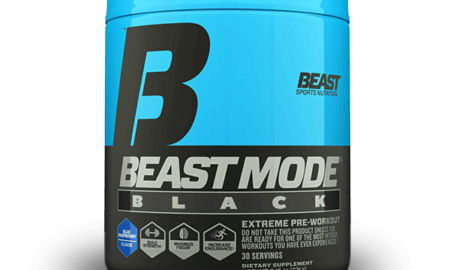
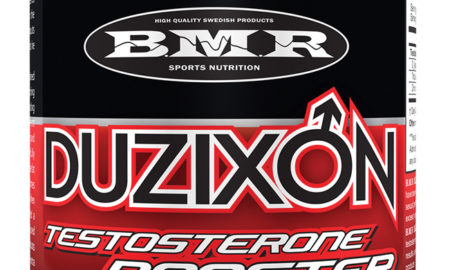
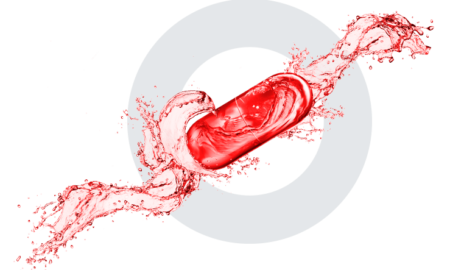
You must be logged in to post a comment Login